Whether you’ve known for years that your dog is carrying a few extra pounds or you just found out at a recent vet visit, you may be wondering, “How can I help my dog lose weight?” Integrative veterinarian, Dr. Julie Buzby DVM, CAVCA, CVA, understands this struggle. That’s why she teamed up with a board-certified veterinary nutritionist, Dr. Jackie Parr, to share four practical and doable canine weight-loss tips on how to help your dog lose weight.
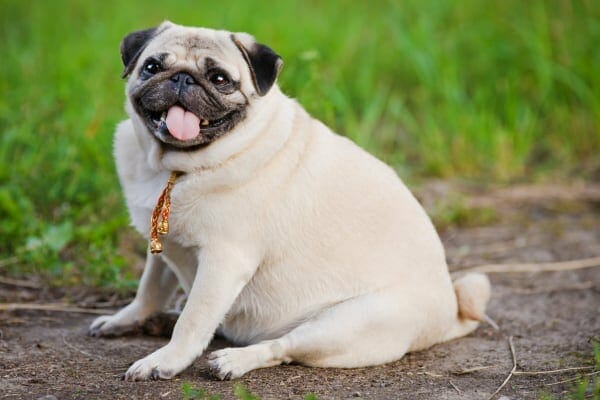
Almost daily in my practice, I break the news to a devoted pet parent that their furry friend is overweight. Then, I see one of two looks cross their faces—guilt or disbelief.
As a veterinarian, I don’t want to sugarcoat this issue—obesity in dogs is a major problem. According to a 2018 study conducted by the Association for Pet Obesity Prevention, 55.8% of dogs in the United States are overweight or obese, and that percentage seems to increase every year. It’s an epidemic and a major concern. Veterinarians see more and more patients who need to lose weight to preserve their health and mobility.
My hope is to help you put any guilt behind you and encourage you with on-the-ground tips you can implement today. With a little knowledge and proactivity, you can help your dog lose weight safely and slowly. The process doesn’t need to be costly or exhausting.
Take a deep breath, release any regrets, and read on. You’re entering a no-judgment zone. I simply want to help you get a firm and confident grip on how to help your dog lose weight and live his best life now.
What is a healthy weight for a dog?
Before jumping straight into how to help your dog lose weight, you have to know what is a healthy weight for your dog. So in a minute, I’m going to teach you a hands-on, DIY method so you can ballpark this. Just remember, please always discuss your dog’s weight loss plan and nutritional needs with your veterinarian.
The “Why” behind doggy weight loss
Why is this subject so vital? Several years back, a great study on Labrador Retrievers revealed the importance of a healthy weight. As part of the study, researchers followed the dogs throughout their entire lives. Half of the dogs lived at their perfect weight or body condition score. The other half went through life a bit overweight. At the end of the study, they concluded that, on average, the lean dogs lived two years longer than their chubbier counterparts.
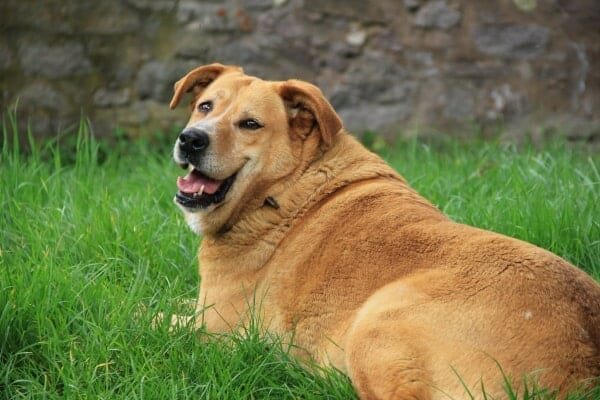
That is a gut check for dog parents. An (even slightly) overweight dog could be gone from your life—and lap—two years earlier than need be. This is hard news to hear. I’m a dog mom myself, so I get it. But I want you to realize what is at stake if you do nothing at all to help your dog lose weight and move toward an ideal body condition. I want you to have as much time as you can with your beloved dog—it’s my mission and the reason I founded Dr. Buzby’s ToeGrips: The Senior Dog Company.
Weight vs. body condition score
As mentioned above, I prefer to approach a dog’s weight by using the term canine body condition score. A dog’s body condition score is much more than a one-dimensional measurement—it is a hands-on assessment of weight based on your dog’s frame as opposed to straight body mass.
I would love for every dog parent to know how to score their dog’s body condition for the one simple fact that you know your dog best. As you practice, it will become second nature—and give you an accurate picture of your dog’s current weight situation.
To quickly learn how to perform a body condition score for your dog (which you absolutely need to understand as you embark on this journey), please read my article: Canine Body Condition Score.
Embedded in that article is a video of me demonstrating step-by-step how to score your dog right at home. It’s an easy three-step process. This is a task you’ll want to perform on a regular basis so you can note and report any changes to your veterinarian. (More on that in just a minute!)
Try this quick body condition score check
In addition to my article and video on canine body condition score, here’s a quick exercise from a board-certified veterinary nutritionist, Dr. Jackie Parr, that will help you know what you’re looking for:
- Hold your left hand out, fingers straight.
- Then, run the fingers of your right hand over the bones in the back of your left hand between the wrist and the knuckles.
- You should be able to feel these bones very easily.
- With this in mind, walk over to your dog and feel his ribs using the same amount of pressure.
Your dog’s ribs should feel like the back of your hand if his body condition score is good. If you find you have to use more pressure to feel your dog’s ribs, or you are having trouble feeling his ribs at all, it’s time for a visit to your vet to talk about a weight loss plan.
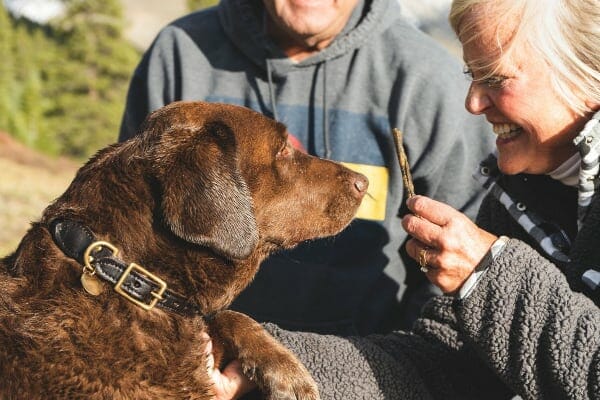
How to help your dog lose weight
Once you discover how much weight your dog needs to lose, be encouraged! You’re in a wonderful position to make small changes in your daily routines that will impact your dog’s weight and quality of life.
It’s never too late—learning how to help your dog lose weight can improve mobility, help relieve arthritis pain in dogs, and bring back playfulness. Here are four actionable tips for you to consider:
1. Use a kitchen scale at mealtimes
This really is a no-brainer because it’s such an easy adjustment any dog owner can make. For about $15, you can have peace of mind that you’re feeding your dog the mathematically correct amount of food.
If you’re currently using an old coffee cup or can from the pantry to measure your dog’s food, you are not alone. I learned over the years that this is the standard way people feed their dogs. They give them a “scoop” of food. Instead, start using a measuring cup and slide it onto a kitchen scale for a quick double-check before adding it to your dog’s bowl.
Measuring cups don’t always measure up well
If you’re using a measuring cup you may be wondering why you also need the scale. The measuring cup is accurate, right? Not necessarily. Here’s why.
When we cook or bake, we tend to use volume—teaspoons, tablespoons, cups, etc. This method of measurement is accurate if you’re measuring liquid, but if you’re measuring something with air pockets (like dog food or cooked chicken), it can be a heaping problem—literally.
A study out of the Ontario Vet College observed 100 dog owners measuring a quarter cup, half cup, and one cup of dog food. They were assigned to use either a two-cup graduated dog food scoop, a two-cup graduated cup for measuring liquids when baking, or a two-cup graduated dog food cup.
After each filling, the owners placed the cups on a kitchen scale. When measuring a quarter cup, 85% of dog owners over-measured and some got almost double the intended amount. In light of the obesity epidemic, knowing that you could double the amount of food your dog needs at each meal, you see how vital it becomes to invest in a kitchen scale.
Like any new habit, it takes about three or four weeks to get used to using a kitchen scale at mealtimes. However, once you establish your new routine, it can make a huge difference in your dog’s life. Plus, the diet you’re feeding is going to last longer, because you’re actually feeding the correct amount and not overfeeding.
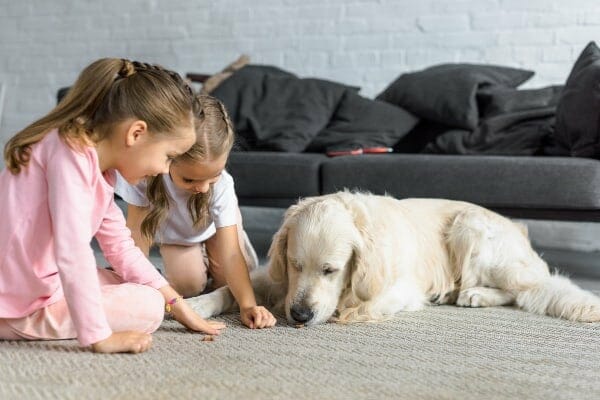
2. Beware of “treat creep”
“Treat creep” happens when we forget to keep tabs on the number of treats our pups consume.
Remember, it’s not only you giving your dog treats, but it’s the UPS driver, the people in the dog park, the neighbor—you get the idea. In many ways, it’s the American culture to share and show love through food, but sadly, it’s prematurely shortening our dogs’ lives.
A lot of well-meaning pet parents feed their dogs treats and “unbalanced” foods. The World Small Animal Veterinary Association published what I like to call the 10% rule. The rule states that no more than 10% of a dog’s calories every day should come from unbalanced foods—treats, biscuits, cookies, chews, fat supplements, and random human foods.
If you’re not careful to monitor your dog’s unbalanced caloric intake, he or she will quickly reach 40% or 50% of calories from “treats”—and that’s just too many calories in a day.
You’d be surprised by the number of clients I’ve found inadvertently sabotaging their dog’s prescribed diet by lavishing them with treats.
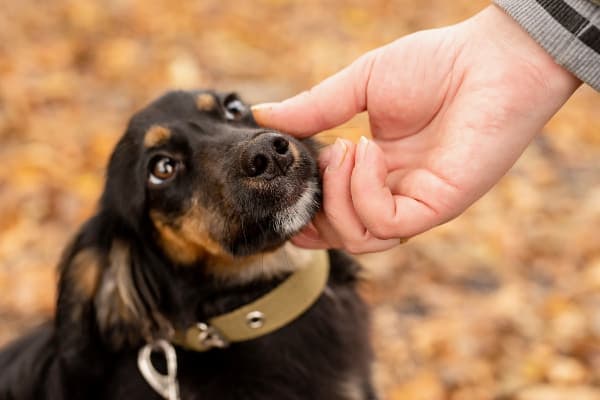
3. Reward with activity not food
This is most often how that “lavishing” problem occurs…my clients will follow to the tee instructions for how much food to give at mealtimes, but they forget to account for the extras. Most dog owners do give added extras, because they love their pets, and it’s an easy way to bond.
But there are other equally meaningful ways to bond with your dog. I always like to remind people, “Your dog just loves being with you. It’s a treat enough for him to be with you, so if he likes grooming or belly rubs instead of giving the cookie, do that. Maybe your dog loves to go for walks or play with a toy or a doggy friend.”
Activity is such a great way to show your dog love in a way that’s going to help him lose weight. I have even had dog parents who have replaced treats with activity, and as a result, have lost weight themselves!
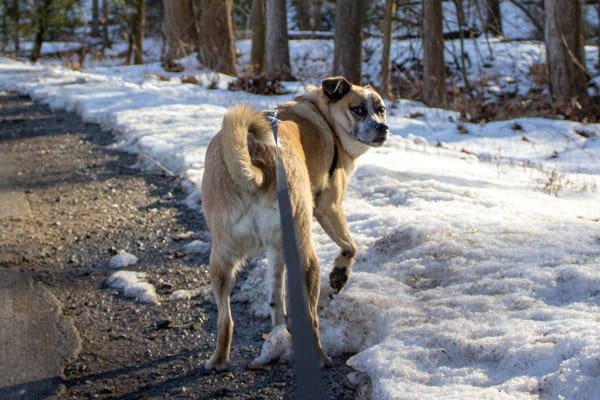
4. Consider a home-cooked diet to help your dog lose weight
If your dog has food allergies or another health condition, you may have already considered a home-cooked diet. Interestingly, my patients who eat home-cooked diets generally remain at healthy body condition scores. Cooking for your dog is a beautiful thing, but it has to be done right.
Working with a board-certified veterinary nutritionist is the best way to ensure your dog has a properly formulated home-cooked diet. They will look at your dog’s blood work, take into account your dog’s likes and dislikes, assess from a dietary standpoint what’s readily available to you, and then formulate a diet that’s custom-tailored to your dog. They also provide ongoing support.
Find a board-certified veterinary nutritionist near you by visiting the American College of Veterinary Nutrition.
“Dog-friendly” doesn’t always mean dog friendly
While searching for dog-friendly recipes online is convenient, those recipes aren’t always the best for your dog.
A study done by the University of California Davis looked at 200 recipes marked “dog friendly”—the majority of them from people without a veterinary background. Out of the 200 recipes, 95% of them did not have all the nutrients that the dog needed.
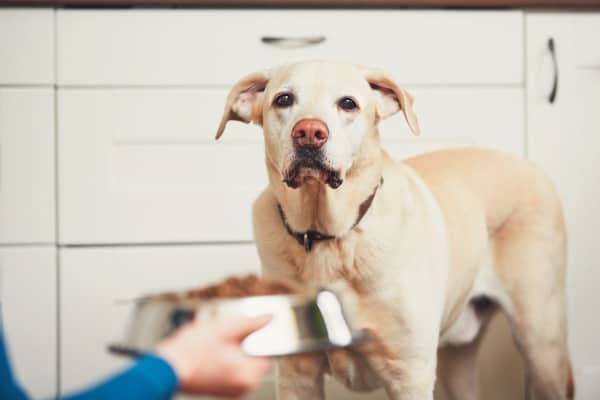
As veterinarians, that’s scary because we’ve seen dogs with horrible problems from nutrient deficiency. Dr. Jackie Parr shares her experience with one such Giant Schnauzer:
I frequently see dogs with dangerously low calcium levels. One was a Giant Schnauzer puppy whose lack of calcium was so severe it dissolved her spine. The puppy’s owner was trying to give her dog the best of the best home-cooked diet, but her puppy’s diet was not appropriately balanced.
I encourage you to consider a home-cooked diet for your dog—just make sure you reach out to find a credible resource so your dog really does get everything that he needs.
Resources for home-cooked dog food
If you’re interested in learning more about home-cooked diets, here are several additional websites to visit:
- The best resource to start with is the American College of Veterinary Nutrition.
- One of the top veterinary nutritionists in the country is Dr. Rebecca Remillard. She is the founder of PetDiets.com, and she’s been a great help to me personally with my patients. Dr. Remillard will work with you and your veterinarian to formulate a diet for your dog’s specific makeup and medical condition.
- Another resource is BalanceIt.com, which is run by Dr. Sean Delaney, a board-certified nutritionist. He produces Balance IT supplements that ensure dogs on homemade diets get all the nutrients they need.
How to help your dog lose weight with little changes day by day
If your dog is a tad—or a lot—overweight, I hope these practical tips have reignited your passion and determination to help your dog lose weight little by little, one day at a time.
Take this information, talk with your vet, and turn back the clock on your dog’s golden years through a weight loss journey. You can start again—it’s never too late.

Does your dog have a weight-loss success story?
Please share in the comments below! Encourage us with where you’ve been and the positive changes you’ve been able to see in your dog’s life.

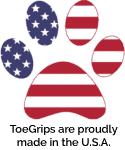
I’m not sure how this works, but I have a little guy 62.5% cattle dog, 37.5% English lab. He seems to gain weight looking at food. He is now 9 and a half, and weighs 82 lbs. Ideal weight is 45-50 lbs. He has been on diet food since we got him, and I put can food on it to help it smell better. When I cut him back, he ears grass, poop if he can find it (I try to pick up quickly but have 3 dogs) and even licks the other dogs’ dishes when they finish. he acts like he’s starving. What fo I do?
Hi Esther,
I am sorry you are struggling to help your boy lose weight. My best advice is to talk to your vet and think about having some routine wellness blood work performed. There is a chance that your boy could have something contributing to his weight gain such as hypothyroidism or Cushing’s disease. I would hate for you to get frustrated trying to alter his diet when there may be an endocrine disease present that would need treatment. Also, your main source of weight gain will be treats and added calories. If you boy is willing to eat everything in sight, I wouldn’t think the canned food is needed to “help it smell better”. Please also be aware that there is a BIG difference in dog food that is labeled for “healthy weight” and a prescription diet that is made to achieve weight loss. “Healthy weight” foods help your boy to maintain his current weight and do not necessarily offer benefits for weight loss goals. I would encourage you to discuss your boy’s diet with your vet and get their opinion on how to make some small changes to get a big impact. Hoping this will help you a bit and wishing you all the best of luck as you navigate this tricky path.
Hi, I have a large 11-year old lab who needs to lose more than a few pounds. When he was younger we played ball a lot so weight was never a problem. Consequently, catching all those balls caused bad hip problems so he is on meds to make him comfortable. We still get in a 4-5 mile walk everyday but I’m at a loss regarding weighing his food. Vet said I should take him down to 2/3 cup of pro plan senior 2X day. When I weigh his food (6oz) it seems like so much, in fact, when I weigh 1 cup (plastic measuring cup), it’s not even 5 oz. Please help me figure this out. Thanks, I love to read your articles!
Hi Jill,
Thanks for reaching out with this question and for your kind words about our articles.
I think the confusion may have come from the fact that a cup holds 8 oz by volume but not by weight. So here’s what you do:
Each bag of food should tell you on the back how many grams of food fit into an 8 oz measuring cup. You can use that number to figure out how many grams or ounces of food you would need to feed. For example, 1 cup of Pro Plan 7+ Sensitive Skin and Stomach is 103 grams of food. This means that 2/3 a cup is roughly 68 grams or 2.4 oz of food by weight. Hope that helps!
When my big guy needed to lose a few I signed him up for swimming. I would weigh him at the vet on the way home each week and was truly stunned at the amount he lost and how quickly. He looked the same to me, so I’m glad I weighed him on the same (assuming calibrated) scale, otherwise I wouldn’t have thought it was helping. I’m guessing he lost a lot of fat and gained a bit of muscle. He went from 131 to 117 in about 8 weeks. He didn’t really care for (controlled) swimming (he’d still swim after ducks with no chance at ever getting remotely close), so that was a bummer. I guess we both look at working out as a chore we’d rather not do… The pool closed during the pandemic and never reopened, also a bummer. But he’s almost 14, and being a large breed (boxer/mastiff) I couldn’t be happier with the length and quality of his life. He’s my sweet angel baby (who, as of yesterday, weighs 107!).
Hi Jessicah,
Great job with helping your big guy shed those extra pounds! Keep up the good work.
My dog is very food motivated but her ideal weight is 4.5 to 5 pounds so she needs very few calories per day or she gains very quickly. Our vet recommended using vegetable tidbits as treats for her. She loves green beans, red pepper, cooked pumpkin and squash, carrots, peas, and most other vegetables, cooked or raw. We are still able to reward her with treats with less impact on her waistline!
Hi Alana,
This is a great suggestions! The vegetables you listed are all good choices for low calorie rewards. I always like to caution people to stay away from onions, garlic, grapes, and raisins when thinking about fruits and veggies as treats, but that still leaves many good options. Thanks for sharing!